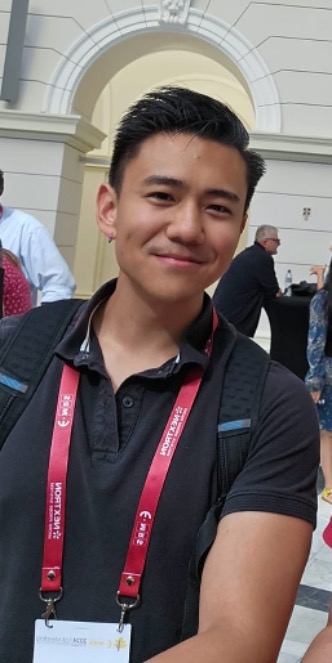Sensor technology is increasingly conquering our everyday life. Embedded systems integrating sensors are arising in fields such as health, transportation or manufacturing. As more and more areas are automated, the importance of sensor grids will also increase. Future trends move towards ultra-dense sensors networks capable of recording all kinds of stimuli. Markets today lack an appropriate, cost-effective solution for real-time, dynamic sensing requiring high density of monitoring points.
Within this context, the project MOTION targets the development of a smart thread capable of simultaneously providing information about its 3D shape, temperature and concentration of chemicals in its surroundings. This operation is highly interesting for granting multi-parameter sensing capabilities to traditional flexible appliances such as catheters or power cables. Besides, our solution ensures minimal intrusiveness and minimal cross-talk with the instrument operation. The envisaged solution provides a convenient tool for a niche of applications leveraging distributed sensing with sharp resolution and real-time dynamics over short-to-middle ranges, including, but not limited to, clinical diagnostics, minimally invasive surgery, environment sensing, pollutant control, and structure monitoring.
To attain this ambitious goal, three scientific objectives are established. First, we will develop a disruptive distributed shape sensor with centimetre resolution, range of hundreds of metres and dynamic performance. The system will grant a much better energy efficiency and lower bandwidth and processing requirements than those currently reported in the literature. Secondly, we will implement distributed chemical sensing based on surface plasmon resonance (SPR) for the first time to our knowledge. SPR is recognized as one of the most powerful technology for chemical and biological sensing. For attaining such objective, we will develop a suitable fibre structure and a distinct SPR interrogation methodology. Finally, we will combine these two sensing functionalities on a properly engineered multi-core optical fibre to implement simultaneously temperature, shape and chemical sensing.
The project MOTION possesses a distinct multidisciplinary character, comprising an intimate collaboration between Telecom and Applied Physics with direct application in the Chemistry and Biology fields. The resulting high-resolution and minimally invasive sensor system is an enabler technology with transformative benefits in a host of applications, e.g., related to sustainable energy industry, healthcare, smart manufacturing processes, and more.
Impact:
The field of distributed fiber optic sensors is growing by leaps and bounds, both scientifically and industrially. The MOTION project aims to develop a new generation of probes based on distributed fiber sensors for flexible instrumentation. These probes provide a comprehensive ultra-dense network of sensors capable of simultaneously measuring temperature, shape and detection of chemical compounds of interest. These probes are optical fibers that can be embedded in flexible instrumentation without compromising their flexibility, light weight and biocompatibility. The technological solution developed at MOTION has direct impact in the following fields:
Healthcare: Flexible medical instruments are frequently used in a wide range of clinical procedures, such as cardiology, oncology and urology. The precise location of a medical device inside the patient is essential for the correct handling of the instrument. In addition, biochemical detection capability on the instrument itself is of utmost importance for many diagnostic procedures. This project presents a promising solution to avoid methods such as fluoroscopy or ultrasound, which can present significant inconvenience to patients. In particular, we propose a wide-ranging solution with mass application as a diagnostic probe. Although the TRL predicted for the technology developed here is low for field testing, we expect to propitiate a breakthrough in the state of the art.
Biochemical detection: The field of chemical and biochemical detection is fundamental to the well-being of society, not limited to medical applications. Biochemical sensing plays a key role in maintaining a cleaner and greener environment. Sensors are key components in the early detection of contaminants and hazardous substances, especially in critical infrastructures such as drinking water supply systems. Biochemical sensors are also essential for security measures at airports. Optical fibers represent an exceptional platform that provides unique properties compared to other sensing technologies. The surface-to-volume ratio of the fibers is high and their surfaces can be easily modified for specific purposes.
Renewable energies: More specifically, we are researching a technological solution for monitoring flexible cables in offshore power plants deployed in deep waters. This is an emerging field for the capture of renewable energies, in which the development of monitoring systems for the required dynamic cables is essential. The two main reasons are the need to promote solutions to analyze the main causes of failure of such dynamic cables in their specifically hazardous operating conditions, and the benefits of including a real-time monitoring system capable of providing early warnings aimed at increasing their lifetime and reducing maintenance costs.
Ref. PID2022-140963OA-I00 financiado por MCIN/AEI/10.13039/501100011033/ FEDER, UE.










